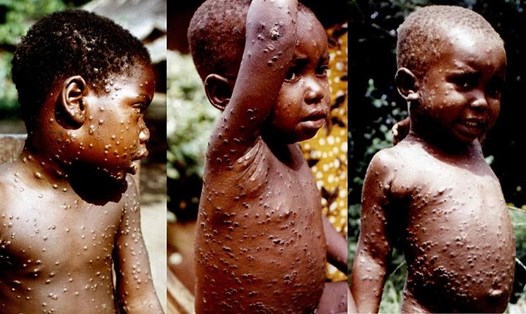Monkey bean disease is caused by the monkey bean virus, similar to the monkey bean virus but less serious. The disease occurs mainly in Central and West African countries, near tropical forests.
The virus was first identified in captive monkeys and since the 1970 there have been outbreaks recorded in 10 African countries.
The first outbreak recorded outside of Africa was in the US in 2003 with a total of 81 cases of infection but no deaths. In 2017, a major outbreak was recorded in Nigeria with 172 cases, 75% of patients were male, aged 21 to 40.
Initial symptoms include fever, headache, swelling, back pain, muscle pain. Patients can have a rash during fever, often appearing from the face and then spreading to other parts of the body, most commonly the palms and feet. The rash marks are often very itchy or painful, changing and gradually turning into scales and then peeling. The lesions can leave scars.
People with monkey bean disease usually get better on their own within 14 - 21 days. Most cases are mild, sometimes like chickpeas, but can also become severe and fatal.
The virus spreads when it comes into contact with infected humans and animals such as monkeys, mice, reptiles or objects carrying pathogens such as beds and clothes. The virus enters the body through open wounds, respiratory tract, eyes, nose or mouth.
This outbreak raises concerns because monkey season tofu appears in areas that do not consider this a rare disease.
Australia recorded the first infection on May 20 as a person returning from the UK and there was a suspected infection, according to Reuters.
Europe is home to many cases of monkey season has been recorded outside of Africa with countries that have detected infected people including Austria, Belgium, the Czech Republic, Denmark, Finland, France, Germany, Italy, the Netherlands, Portugal, Slovenia, Spain, Sweden, Switzerland and the UK.
Monkey seasons have also appeared in the Middle East (Israel, UAE) and Asia (Argentina, Canada, USA).
In Vietnam, the Ministry of Health has sent a dispatch to the People's Committees of provinces and cities directly under the Central Government on measures to prevent monkeys, including actively supervising detecting suspicious cases at the border gate, especially cases from the countries that are circulating the epidemic of monkey bean disease; strengthening monitoring to detect cases of disease at health facilities in the area; coordinate with epidemiological and Pasteur hygiene institutes to diagnose the disease; Proactively communicate, raise awareness for people about monkeys and epidemic prevention and control measures as recommended by health agencies.
The World Health Organization (WHO) said on May 24 that the outbreak of monkey season outside of Africa could be controlled. The number of infections is increasing but so far not serious.
We call on everyone to strengthen monkey season monitoring to determine the level of infection and how the disease develops, said Sylvia Briand, WHO director for global toxic infection response.
According to Ms. Briand, the world currently has vaccines and treatments for monkey bean. She called for appropriate measures, enhancing research and global cooperation. WHO is preparing guidelines for vaccine strategies and will convene additional meetings to make recommendations to support member countries.
Scientists also do not believe that the current outbreak could turn into an epidemic like COVID-19 because the virus is not as contagious as SARS-CoV-2.







